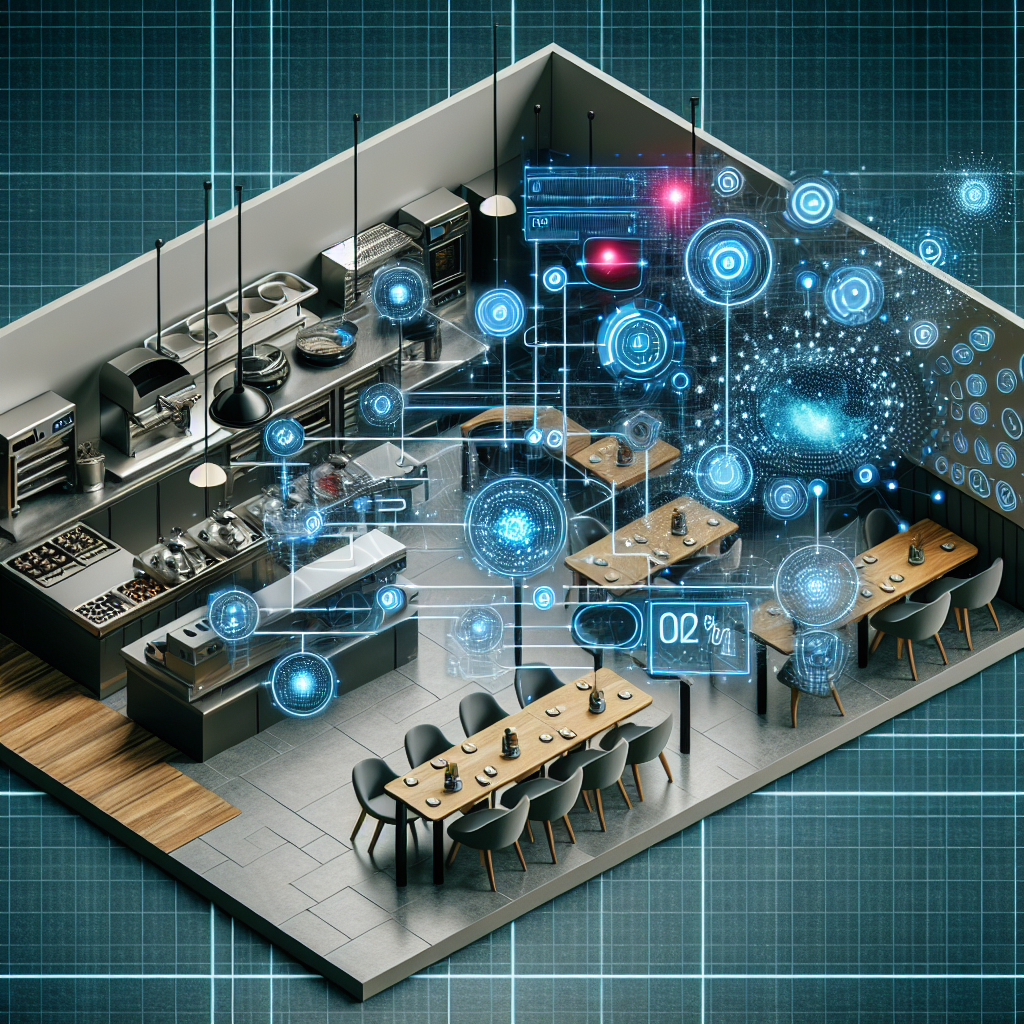In recent years, artificial intelligence (AI) has made significant strides in various industries, including the restaurant industry. One of the most exciting applications of AI in restaurants is predictive maintenance and equipment monitoring. By harnessing the power of AI, restaurant owners and managers can proactively identify and address issues with their equipment before they escalate into costly breakdowns. This not only helps to minimize downtime but also improves the overall efficiency and performance of the restaurant.
Implementing AI for predictive maintenance and equipment monitoring in restaurants involves using sensors, data analytics, and machine learning algorithms to monitor the condition of equipment in real-time and predict potential failures. By analyzing data collected from sensors installed on equipment such as refrigerators, ovens, and HVAC systems, AI can identify patterns and anomalies that indicate possible issues. This enables restaurant staff to take preemptive action, such as scheduling maintenance or repairs, before a breakdown occurs.
There are several ways in which AI can be used for predictive maintenance and equipment monitoring in restaurants:
1. Predictive Maintenance: AI can analyze historical data on equipment performance, maintenance records, and environmental factors to predict when maintenance is needed. By identifying patterns and trends, AI can alert restaurant staff to potential issues before they lead to equipment failure.
2. Equipment Monitoring: AI-powered sensors can continuously monitor the condition of equipment in real-time, collecting data on factors such as temperature, pressure, and energy consumption. This data can be analyzed to detect abnormalities and deviations from normal operating conditions, allowing staff to take corrective action before problems escalate.
3. Fault Detection: AI algorithms can be trained to detect specific faults or malfunctions in equipment based on patterns in sensor data. By identifying early signs of equipment failure, AI can help prevent costly breakdowns and downtime.
4. Energy Optimization: AI can also help optimize energy usage in restaurants by analyzing data on equipment performance and energy consumption. By identifying inefficiencies and recommending adjustments, AI can help reduce energy costs and improve sustainability.
Overall, implementing AI for predictive maintenance and equipment monitoring in restaurants can offer several benefits, including:
– Reduced downtime: By proactively addressing equipment issues, AI can help minimize downtime and keep operations running smoothly.
– Cost savings: By preventing costly breakdowns and repairs, AI can help lower maintenance costs and extend the lifespan of equipment.
– Improved efficiency: AI can help optimize equipment performance and energy usage, leading to increased efficiency and productivity.
– Enhanced safety: By monitoring equipment conditions in real-time, AI can help identify potential safety hazards and prevent accidents.
In order to implement AI for predictive maintenance and equipment monitoring in restaurants, there are several steps that need to be taken:
1. Identify key equipment: Start by identifying the equipment in your restaurant that is critical to operations and would benefit from predictive maintenance and monitoring. This could include refrigeration units, cooking equipment, HVAC systems, and more.
2. Install sensors: To collect data on equipment performance, install sensors on key pieces of equipment. These sensors can measure factors such as temperature, pressure, vibration, and energy consumption.
3. Collect and analyze data: Use AI-powered software to collect and analyze data from the sensors in real-time. By monitoring equipment conditions and identifying patterns, AI can predict potential failures and recommend maintenance actions.
4. Implement maintenance strategies: Based on the insights provided by AI, develop and implement maintenance strategies to address potential issues before they escalate. This could include scheduling preventive maintenance, replacing worn parts, or making adjustments to equipment settings.
5. Monitor performance: Continuously monitor the performance of your equipment and the effectiveness of your maintenance strategies. Adjust and refine your approach based on feedback from AI and real-world observations.
Incorporating AI for predictive maintenance and equipment monitoring in restaurants can revolutionize the way equipment is maintained and managed. By leveraging the power of AI to predict and prevent equipment failures, restaurant owners and managers can improve efficiency, reduce costs, and ensure a seamless dining experience for customers.
FAQs:
Q: How much does it cost to implement AI for predictive maintenance in a restaurant?
A: The cost of implementing AI for predictive maintenance in a restaurant can vary depending on the size of the restaurant, the number of equipment to be monitored, and the complexity of the AI system. It is recommended to consult with AI vendors to get a customized quote for your specific needs.
Q: Can AI predict all equipment failures in a restaurant?
A: While AI can predict many equipment failures based on data analysis, there may be some unforeseen issues that AI may not be able to predict. It is important to have a comprehensive maintenance plan in place in addition to AI monitoring.
Q: How often should equipment be monitored using AI for predictive maintenance?
A: The frequency of equipment monitoring using AI for predictive maintenance will depend on the type of equipment, its usage, and the criticality of its operation. It is recommended to monitor equipment regularly and adjust the monitoring schedule as needed based on AI insights.
Q: Can AI help reduce energy costs in a restaurant?
A: Yes, AI can help optimize energy usage in a restaurant by analyzing data on equipment performance and energy consumption. By identifying inefficiencies and recommending adjustments, AI can help reduce energy costs and improve sustainability.

